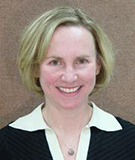Dr. Universe: Do babies have ways of communicating? –Jalen, 12, North Carolina
mikayla.makleI learned a lot about how babies use emotion to communicate from my friend Masha Gartstein, a professor of psychology at Washington State University.

She told me that crying is just one way babies communicate. After two or three months, babies will usually start to smile with a purpose.
“It’s an amazing thing,” Gartstein said. “That becomes another way of communicating.”
It’s also a nice relief for caregivers, or a baby’s brothers and sisters, especially after hearing lots of crying for a few months. Babies and caregivers can now both communicate joy or happiness.
At about six months old, babies can usually respond to their own names. But they still can’t talk like kids and grown-ups.
Instead, they might use gestures or point at things to communicate ideas to others. They might use their hands, fingers, or bodies to send out a message like, “I want that toy!” or “Look what I did!”
When a baby is about twelve months old, they will start to put together sounds that make up words like “mama” or “dada.” All the while, the baby’s personality is developing, too.
Find out more



